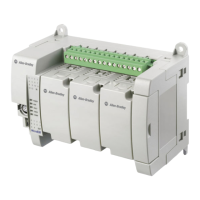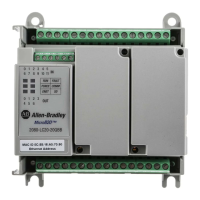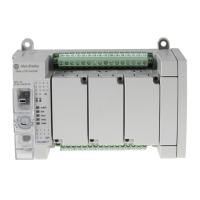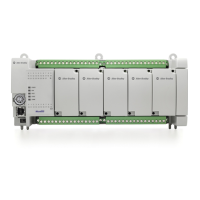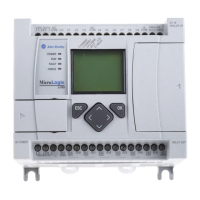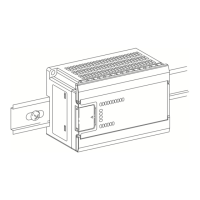Rockwell Automation Publication 2080-UM002K-EN-E - March 2019 325
PID Function Blocks Appendix F
4. Note the temperature fluctuation of the process value.
5. Calculate deviation value with reference to the fluctuation. For example, if
the temperature stabilizes around 22 °C (72 °F) with a fluctuation of
21.7…22.5 °C (71…72.5 °F), the value of ‘ATParams.Deviation’ is:
6. Set the deviation value, if you have not set it yet.
7. Change the initialize input to FALSE.
8. Wait until the ‘AT_Warning’ shows 2. The autotune process is successful.
9. Get the tuned value from the ‘OutGains’.
How Autotune Works
The auto tune process begins when the ‘Initialize’ is set to FALSE (Step 7.) At
this moment, the control output increases by the amount of ‘Step’ and the process
waits for the process value to reach or exceeds ‘first peak’.
First peak is defined as:
For Direct Operation: First peak = PV1 - (12 x Deviation)
For Reverse Operation: First peak = PV1 + (12 x Deviation)
Where PV1 is the process value when Initialize is set to FALSE.
Once the process value reaches first peak, the control output reduces by the
amount of Step and waits for the process value to drop to the second peak.
Second peak is defined as:
For Direct Operation: Second peak = PV1 - (3 x Deviation)
For Reverse Operation: Second peak = PV1 + (3 x Deviation)
Once the process value reaches or falls below second peak, calculations
commence and a set of gain will be generated to parameter OutGains.
For °C:
22.5 - 21.7
2
= 0.4 For °F:
72.5 - 71
2
= 0.75
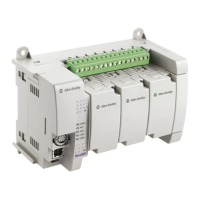
